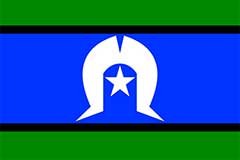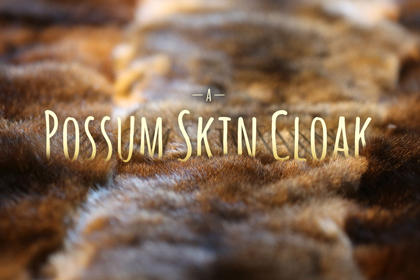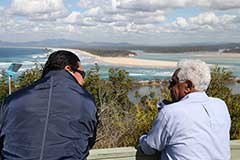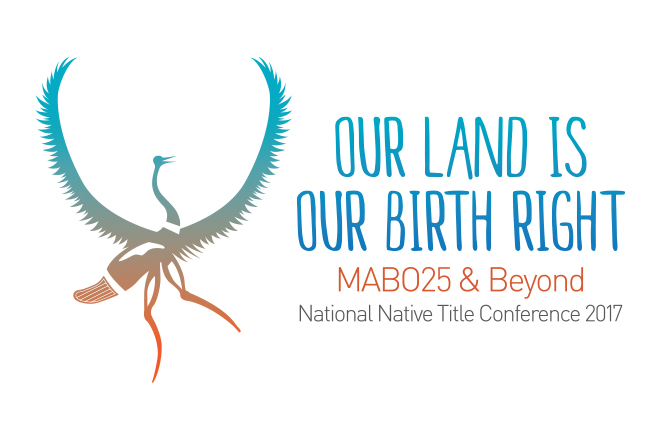There are two main types of background reading that will be useful to your research:
- Family and personal histories – family, community histories and life stories or biographies are histories of individuals, families, communities, missions, reserves or other places
- Administrative histories – histories of the legislation and administration of Aboriginal and Torres Strait Islander people
Family and personal histories
Many Aboriginal and Torres Strait Islander people have written histories of their own lives, their families and of communities such as missions or reserves. These are mostly published books and should be available in public libraries. You may find that someone has already done a lot of the research that's on your plan. And you may get ideas for sources to explore.
AIATSIS has a comprehensive collection of writings by and about Indigenous people. Some of the collection is indexed by name in the Aboriginal and Torres Strait Islander Biographical Index (ABI).
Search strategies
Start your background reading by searching and browsing the ABI and Mura® catalogue.
- Search the ABI for family names. If there are too many search results, limit the results by place (see the left-hand side of the search results).
- Browse the Family History section of Mura®. There may recent family histories that are relevant to your research.
- Search the ABI by place. If the place is relatively large (Northern Territory) you will need to try to narrow to a smaller place (Alice Springs). If your family isn’t in the search results, you may find the names of other people associated with that place.
- Search Mura® for names or places. The search results list will include family and community histories.
Note that the search results will also give you some information about the language and people groups associated with places or names. See Thinking about place.
Other places to search for family histories:
- The National Library catalogue – you might include family name, place, �?Indigenous’ and �?family history’ in your search string. For example: �?Smith Indigenous Northern Territory’.
- Google and Google books – you might include family name, place, �?Indigenous’ and �?family history’ in your search string.
Administrative histories
The term �?administrative history’ refers to the protection and welfare legislation that the states and territories had for the protection or welfare of Aboriginal and Torres Strait Islander people. Each state was different so it’s worth knowing what happened in the states that are important to your family.
Why do you need to know?
Some of the records that may be available about your family were created because of the legislation. For example, the protection legislation may have allowed individuals to apply for an �?exemption’ from the Act. This meant that an Aboriginal person wasn’t treated as Aboriginal for the purpose of the Act and means that there should be a file somewhere with the exemption application and other paperwork.
Research guides
Each of the state, territory and commonwealth archives that holds government records on Aboriginal protection welfare acts has created research guides to help people trying to find records about themselves or their families. All of these guides include a short history of the protection/welfare regime and the kinds of records that were created.
New South Wales
- Aboriginal Australians family history – State Library of NSW: guides.sl.nsw.gov.au/aboriginal-australians
- Indigenous Australians – State Records NSW: https://srwww.records.nsw.gov.au/archives/collections-and-research/guides-and-indexes/indigenous-australians/guides
Northern Territory
- Researching your Aboriginal family history – Northern Territory Archives Service: www.artsandmuseums.nt.gov.au/ntas/media/pdf/ATSI-Family-History_Oct2012.pdf (PDF 143kb)
- Tracking family: A guide to Aboriginal records relating to the Northern Territory – National Archives of Australia: guides.naa.gov.au/tracking-family
Queensland
- Aboriginal and Torres Strait Islander family history – State Library of Queensland: www.slq.qld.gov.au/resources/family-history/atsi
- Records about Aboriginal and Torres Strait Islander peoples – Queensland State Archives: www.archives.qld.gov.au/Researchers/Resources/Pages/Indigenous.aspx
- Records relating to Aboriginal and Torres Strait Islander peoples (Brief guide 50) – Queensland State Archives: www.archives.qld.gov.au/Researchers/CollectionsDownloads/Documents/BG50ATSI.pdf (PDF 51kb)
South Australia
- Aboriginal family history – State Library of South Australia: guides.slsa.sa.gov.au/AboriginalFH
- Aboriginal services – State Records of South Australia: www.archives.sa.gov.au/content/aboriginal-services
Tasmania
- IRecords on Tasmanian Aboriginals – LINC Tasmania: http://www.linc.tas.gov.au/archive-heritage/guides-records/Pages/Aboriginal.aspx
- Documenting Tasmanian Aboriginal descent – LINC Tasmania: www.linc.tas.gov.au/family-history/Pages/Aboriginal-ancestry.aspx
Victoria
- Aboriginal people and family history – State Library of Victoria: guides.slv.vic.gov.au/aboriginalfamilyhistory
- walata tyamateetj: A guide to government records about Aboriginal people in Victoria: www.prov.vic.gov.au/publications/walata-tyamateetj
- Finding your mob: Researching Aboriginal family history at the Victorian Archives Centre: http://prov.vic.gov.au/publications/finding-your-mob
- Finding your story: Resource manual to the records of the Stolen Generations in Victoria: prov.vic.gov.au/publications/finding-your-story
Western Australia
- Indigenous family history – State Library of Western Australia: www.slwa.wa.gov.au/find/guides/family_history/australia/indigenous
- Aboriginal family history – State Records Office of Western Australia: www.sro.wa.gov.au/archive-collection/collection/aboriginal-records/aboriginal-family-history
- Looking west: A guide to Aboriginal records in Western Australia – Department for Child Protection: www.dcp.wa.gov.au/SupportingIndividualsAndFamilies/Documents/LookingWest.pdf (PDF 385 kb)
- Signposts: A guide for children and young people in care in WA from 1920 – Department for Child Protection: signposts.cpfs.wa.gov.au
See also: Legislation
AIATSIS online exhibition: To Remove and Protect
This online resource includes digital copies of legislation relevant to Aboriginal and Torres Strait Islander people and some of the protector’s reports submitted to state governments. It has information for states and territories as well as the federal government.




